Cinema Customer's Hilarious FAQ's:
"How come those items in concession stand are so expensive?"
"Why are you playing these annoying ads?"
"Where do these pirated DVD's and CD's came from?"
"Why do you brag your cinemas as digital?"
"Would a cinema personnel with an above average computer skills able to copy the movie files?"
I know that many people in this world are a very huge fan of movies and cinematography. And i know one major fact, that all the people who reads this post has been to a movie theater for at least once in their lives. Majority of the movie goers are people with their families when it's bonding time, after shopping, or people spending time with their friends and partners including me as i usually do ♥, passionate people in the film industry, and some just spend their spare time alone just to rest or being just a loner(poor guy).lol
Some people stay inside the theater for other purposes rather than watching a movie because the environment is very relaxing because of some comfortable seats and the cool environment. Many people gets caught doing unlawful behaviors, and countless of times we see people fall asleep (especially when the movie is a flop or boring) or some just simply taking a rest inside.
I worked as a Cinema Specialist for years and so now i want to share my basic knowledge about how movie theaters work and its advancements to technology and i'm going to share some untold facts about cinema and piracy.
What are the major differences of Motion Picture Films to Digital?
The old "Motion picture film"
This is an example of a 35mm motion picture film. This includes the series of image frames in a film roll that is illuminated and being projected by a movie projector.
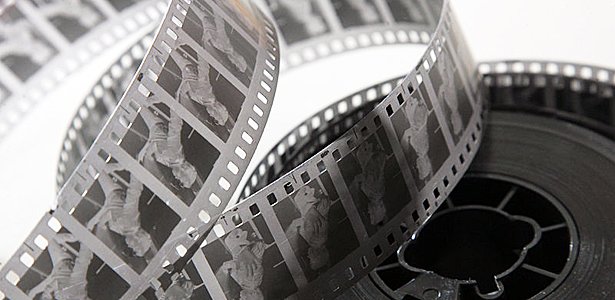
img source
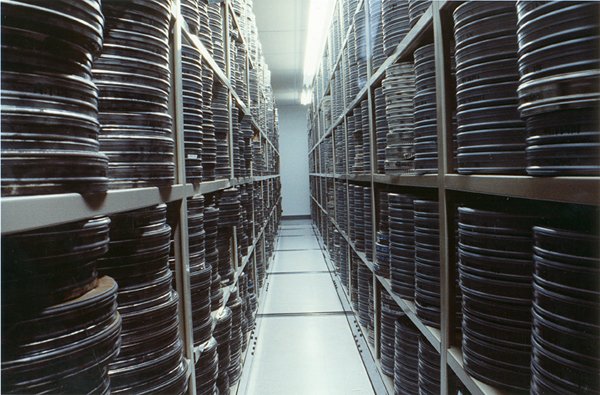
A storage area in a film studio.
img source
Motion picture film projector
This is the older type of projector that's used by majority of cinemas in the past decades. It is manually operated by a cinema personnel called Projectionist. It is categorized as an opto-mechanical device for displaying a motion-picture film.
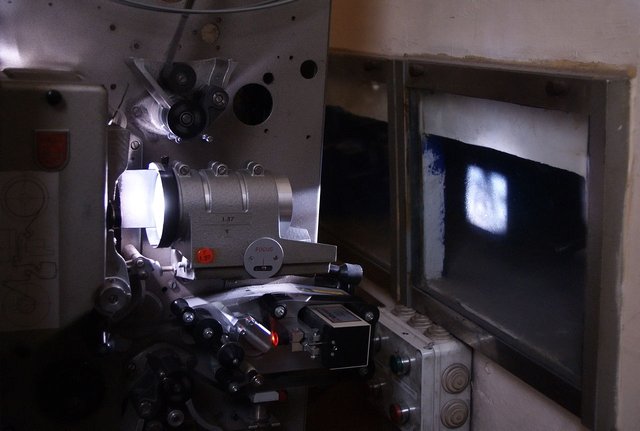
This is what it looks like when you're inside the projection room that is usually located at the backmost and center part of the cinema where the projector is.
The cons of the motion-film projector
I have witnessed the transition of these motion film projectors to digital projectors when i started to work in this field in a local mall in the Philippines. The usage of the two are way different because working with the old projector will also cost you some physical efforts and real hardwork each day of work as a projectionist.
In using this old type of projector, the projectionist will care for the following:
- Timing is very important to be carefully mastered by the operator of this older projector because the audio and the video are separately turned on as they must play simultaneously and smoothly. And as you can see to the image above, the projectors there are two. many motion pictures usually splitted in two, because many instances the film reel is not enough to feature a whole show. This process is called changeover, the first reel is on projector A and the other reel is on projector B. The transitions must be smooth not to be noticed by the guests watching the film. Failure to this timing will put the operator in some trouble, one of them is the audio and video will not be synchronized, or might cause damage. However, there are systematic signals or cue marks that a projectionist to look for when doing a switch. The bottomline is, it's not a job that you can sleep or play for and it requires focus.
- The personnel must carefully operate in the right order, for an instance, you must turn on the rotation of the film before opening the bulb for it may burn the film. The operator must be also concerned not just the the operation of the projector, but also the lighting system inside the cinema and monitoring the air-conditioning systems.
- Old films are becoming brittle as time passes, it is one of the struggles of a projectionist in his experience, as when it happens, they must manually reconnect it back as soon as possible as they might be receiving complaints from unsatisfied guests when it happens during a regular showing. It must be handled with care as well.
- Old motion films are too heavy to be carried by delivery personnel. Nowadays the digital movie files are distributed by the production studios via hard drive and is very portable especially when it comes with the external portable hard drives.
- These films can be stolen physically, and can be a target for easy piracy.
There also comes a "single-reel" projector as a little advancement to the use of two projectors where it resembles the two reels automatically with a single projector.
img source

img source
The Digital Cinema Projector
The Movie Hard Drives
As opposed to the motion-picture film, the studios are now able to integrate movies in a computer hard disk drive (HDD) or an external usb hard disk drives that are ingested and projected by a Digital Cinema Projector of their dealing exhibitors, the movie theaters.
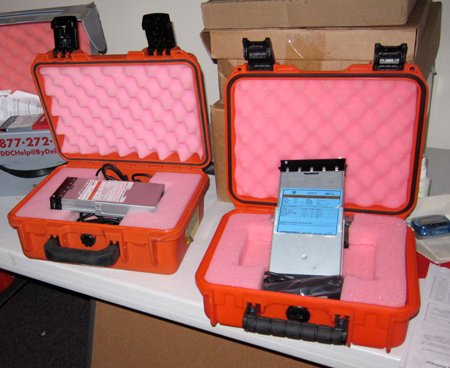
*The package usually comes with the hard disk drive itself, adaptors, cords, the movie production and distributor's information, item's serial numbers, and a hard case.
img source
Can i copy-paste the package files of the movie's hard disk into my computer?
- The answer is yes, but you can never be able to play the file to any computers and other gadgets.
Some of the major advancement of the digital theater systems are on its security features. The files are in a highly-encrypted multi-gigabyte-sized MXF files, which are separately used to store audio and video streams, and auxiliary index files in XML format. The package inside a movie's hard drive is generally called a Digital Cinema Package or DCP that can only be read by a digital projector.
However, if you're a developer and you master the compression and encrypting system of the files on it, you won't still be able to play the movie because usually it requires a "KDM" file that will be coming from the distributor as requested by the exhibitor (Movie Theaters) via e-mail, and then copying it to a USB flash drive then ingesting it to the cinema's projector before the movie's actual screening date and time.
What is a KDM?
A KDM or "Key Delivery Message" is a very small-sized file (less than a MB) that is disintegrated to the DCP file in a hard drive and is kept and made and generated by the distributors. KDM is associated to the particular compositions (CPLs) which may include multiple encrypted picture, sound and subtitle assets, and each playback system requires a uniquely generated KDM. This file provides the ability to define date/time windows within which the KDM is valid.
KDM's are like the movie's lock and are being generated by the distributor to work in a "specific" exhibitor and it's projector model. Distributors issue movies to the theaters this way.
KDM's are to be given to the exhibitor when their deal is done. So for the cinema managers who fail to personally settle the deal and failed to receive the required KDM for their showing at the right time, there will be NO SHOW.
Some production studios sometimes release DCP's of movies comes with "unlocked KDM's' for the theaters can play it anytime for public showing purposes like educational movies for block screening, special screenings, etc. when the movie is a little old, or not too mainstream, or for other reasons.
This is a Digital Cinema Projector
img source
On the left is a digital audio amplifier and on the right is a digital cinema projector. As you may notice, the projector has two screens, the small one for the manual controls of the douser, bulbs, etc. and its informations and warnings, and the other one is for the composition of the ingested DCP's or movie packages, movie playlists and the projector's automatic commands including the automatic turning on and off of the bulbs and dousers of the projector for a much easier work.
This is a relief for the projectionists who are previously working on an old motion-picture film projector.
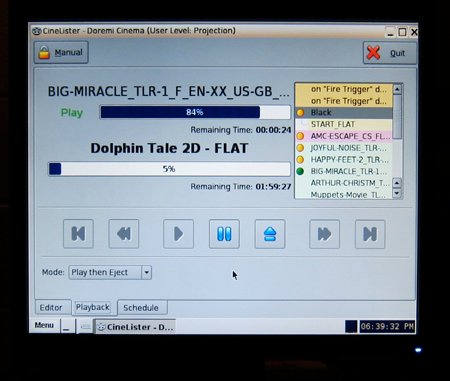
This is an example of a projector screen showing a successful play of a movie with its KDM unlocked.
img source
Nowadays majority of the movie theaters use a TMS or Theatre Management System. To simply describe this machine, It's a component in which it's role as a server and connected or networked to the components that a projectionist should have responsibility for, which are the Projector, Sound Processors, and the Cinema lightings . Its been a major relief to the theater management's perspective because the TMS simply does the job of a projectionist like turning on and off the components including the lightings inside the cinema, automated playing of the movies in the planned schedules, as programmed by a cinema specialist or personnel before he starts another day of his work. It also has a very large storage that can keep and ingest movie files and electronically transfer them to the connected projectors to play.
This is a sample of a Theatre Management System Hardware.
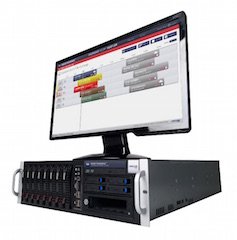
img source

Behind me is a Dolby CP750 Digital Cinema Processor the one that amplifies the film's audio to the speakers inside the cinema, it has a traditional 5.1 layout. Other cinemas are using Dolby Atmos and brags them as part of their marketing, which has the 7.1 layout for more dynamic speakers and much more realistic sound and has a smarter setup and configurations. In my previous job i used to multitask and operate a Rosetta Bridge's TMS software which are connected to 3 Christie Solaria CP2215 DLP Digital Cinema Projectors.
Understanding How the Business Works
The movie comes first from the production studio. A production studio needs companies to distribute their films as called distributors in cinema industry. The distributor takes on a cost of making the copies and the DCP's of the movie and to where they will be issuing the movies to. And they require the exhibitors (The movie theaters who asked for the distribution of movies) to share 10% to 50% of their revenue to them depends on the movie and its quality and ratings. The distributor has their own personnel called "checkers" as they are deployed in each of every cinema as they constantly monitor the daily transactions and behaviors of their exhibitors.
Why are the snacks and all of the products are more expensive as the SRP's? And why do cinemas show ads?
The catch:
In the average leasing of the movie, on the first two weeks of showing, the distributors require more percentage of the profits and the exhibitors just getting like 0-25% (if they were lucky) of the ticket sales' profits, then the next couple of weeks it goes 50-50, and if they can be able to show more than a month, the exhibitor gets up to 75% but who else will be watching a movie that's more than a month old? This is why movies keep extending up more than a couple of weeks even when it's not too blockbuster, and given that the movie theater was setting an investment for their employees salaries, the taxes, bills, maintenance, concession stands, and other miscellaneous fees, this leaves them no choice but to raise their profit by several solutions including raising the price of the food and drinks to the concession stand, by selling advertisements to their cinema as you can see there are ads included to some trailers, to add more revenue for the theater.
Piracy
What's all about these tiny markings on the screen as we can see on other cinemas?

These aren't the actual size of the markings, i just emphasized it. Those markings and the likes, are anti-camcording patterns used by the exhibitors who are the frequent targets of the camcorders. Each one cinema has its own unique pattern. It will then be used for investigations in the detection of the origin of the pirated movie. However, these markings are just a followup to the markings made by the distributor to put into the DCP video itself so they can be also be used for a more accurate anti-camcording investigations.
Camcorder Modus Operandi (Method of doing the unlawful behavior) and where does pirated CD's came from?
Although the digital cinema processing are very much secured as they can't duplicate the high quality content in the distributed movie's hard drive, the camcording persons also innovated as they purchase new gadgets at least like the HD cameras in the form of eyeglasses, wrist watches, a pen, or a dress button that managed to avoid the bust. Although the offenders are being reduced because of the laws, they still cannot be stopped. Their goal is none other than to just to earn instant money. Based on police reports and the infos circulating the industry, these what they call criminals in PH work for infamous personalities allegedly the Chinese small-time businessmen (not meaning to be a racist i love my Chinese friends) who vows to pay them back thousands of money, price is allegedly up to $500 each movie in exchange of their camcorded soft-copy of the "brand new" movie then these infamous businessmen produce their own workshops for printing packages and with a use of basically a computer with a DVD writer, they issue thousands of pirated movies to the illegal public vendors for the price of at least $0.2 each.
Caution:
In the Philippines, piracy and intellectual property theft is a major offense. So be careful when you use gadgets while watching movies at a cinema. There are lots of foreigners who weren't aware of the country's law, although some obviously capturing just video clips and still getting caught and getting their trip ruined. Also there is a $100 reward for whoever reports the camcorder to the cinema personnel so some customers are also vigilant in accordance to the law and also there's a government organization called MTRCB (Movie and Television Review and Classification Board). It was established by the government to deploy some of their personnel in each exhibitor to monitor their behavior and its customers with respect to their rules and regulations and the law. They are also assigned officially decide the proper classification and ratings for the movies regardless of how the movie was rated in other countries, for which movies are specifically rated whether its not allowed for children under 13 years old, 16 years old, and 18 years old or whether the movie requires parental guidance.
The cinema personnel are of course the main supporters of the Anti-Camcording Act RA10088 of the Philippines. The fine will be from 50 thousand to 750 thousand pesos ($1,000-$15,000) and up to 6 months imprisonment for the convicted offenders.
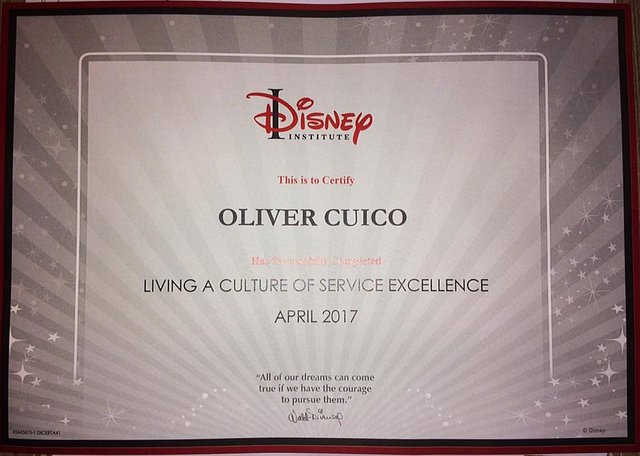

"All of our dreams can come true if we have the courage to pursue them."
-Walt Disney.
Follow me for more of my posts and my future blogs.
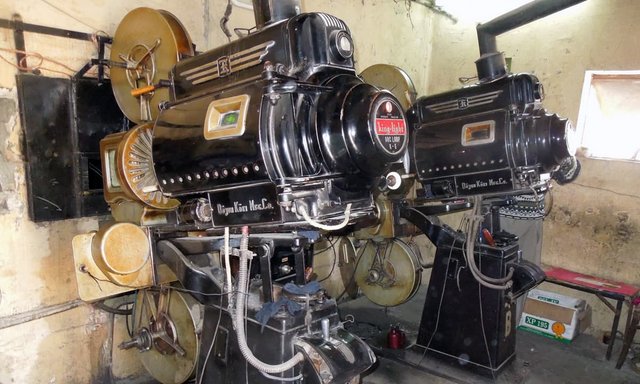
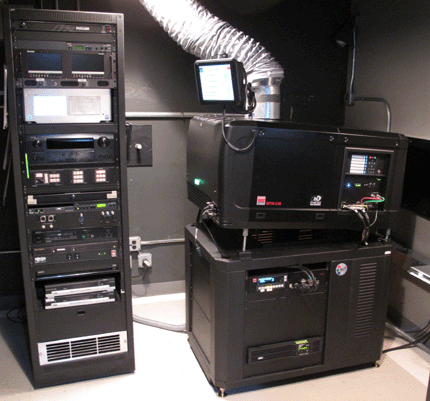
Awesome!
Really, I got an introduction to the "Behind the Scenes of Theatre."
Actually, I visit Theatres rarely. Rather I enjoy watching from Live Stream!
I am becoming a desperate fan of the GOT Series.
However, the best killing scenes blew my mind out!
While Game of throne's killer scenes astounded me , I was in heaven (or, hell). Though I couldn't figure out why the show mistakenly aired, yet the Season 7 is something kinda must watch.
Downvoting a post can decrease pending rewards and make it less visible. Common reasons:
Submit
good job bro. ^_^ 💋
Downvoting a post can decrease pending rewards and make it less visible. Common reasons:
Submit
Great post @olivercuico i was not aware of a lot of this especially all the digital encryptions. Thanks for teaching me something new!
Downvoting a post can decrease pending rewards and make it less visible. Common reasons:
Submit
♥ you guys @haleyaerith and @sasha.shade the best Steemit couple
from your scholar brother LMAO
Downvoting a post can decrease pending rewards and make it less visible. Common reasons:
Submit
FACT <3
Downvoting a post can decrease pending rewards and make it less visible. Common reasons:
Submit
another great blog @olivercuico very informative .
Thank you for taking us to real world of cinema Theatre and for sharing your knowledge behind it .
Downvoting a post can decrease pending rewards and make it less visible. Common reasons:
Submit
Thank you very much @sandaraclark for taking your precious time for reading my post. ♥
Downvoting a post can decrease pending rewards and make it less visible. Common reasons:
Submit
ah may KDM pala...good to know!!
Downvoting a post can decrease pending rewards and make it less visible. Common reasons:
Submit
Good to know din po na binasa mo ang buong post ko thanks @descterity!
Downvoting a post can decrease pending rewards and make it less visible. Common reasons:
Submit
of course :)
Downvoting a post can decrease pending rewards and make it less visible. Common reasons:
Submit
Another great post @olivercuico! Well done!
Downvoting a post can decrease pending rewards and make it less visible. Common reasons:
Submit
Thank you @jazzybells! ♥
Downvoting a post can decrease pending rewards and make it less visible. Common reasons:
Submit
Downvoting a post can decrease pending rewards and make it less visible. Common reasons:
Submit
Hey @olivercuico amazing post! My mother worked at Disneyland and i'm used to go to some movie theaters with her nearby. Thanks for sharing these interesting facts about movie theaters. You're doing great!
Downvoting a post can decrease pending rewards and make it less visible. Common reasons:
Submit
Downvoting a post can decrease pending rewards and make it less visible. Common reasons:
Submit
Thank you very much @steemiteducation for the learnings you give us everyday and especially today for featuring my post. Have a great time ahead! Cheers!
Downvoting a post can decrease pending rewards and make it less visible. Common reasons:
Submit
great post man, wow... i watched a documentary once on the pros & cons of digital vs. film movies, it was fascinating, i think it was hosted by keanu reeves actually (sounds funny, but true), it was on netflix. a really great topic! PEACE (-:
Downvoting a post can decrease pending rewards and make it less visible. Common reasons:
Submit
Upvoted / Resteemed
Downvoting a post can decrease pending rewards and make it less visible. Common reasons:
Submit
Thank you very much @clumsysilverdad for the support and taking time to read my posts. Haha Keanu Reeves really i'll check it out!
Downvoting a post can decrease pending rewards and make it less visible. Common reasons:
Submit
Another stunning post man, You're on fire this week mate! I'm a huge fan of film and cinematography and it's really interesting to see how technology has changed (and the sheer size of the technology used to bring us film) over the course of a few decades.
Downvoting a post can decrease pending rewards and make it less visible. Common reasons:
Submit
Not too much noise in my apartment now that's why i can dig deep haha, and i can't believe i i'm killing it! The inspiration is pushing me up. Thank you very much @locikll!
Downvoting a post can decrease pending rewards and make it less visible. Common reasons:
Submit
upvote
Downvoting a post can decrease pending rewards and make it less visible. Common reasons:
Submit
Downvoting a post can decrease pending rewards and make it less visible. Common reasons:
Submit
Downvoting a post can decrease pending rewards and make it less visible. Common reasons:
Submit
Downvoting a post can decrease pending rewards and make it less visible. Common reasons:
Submit
Downvoting a post can decrease pending rewards and make it less visible. Common reasons:
Submit
Downvoting a post can decrease pending rewards and make it less visible. Common reasons:
Submit
Downvoting a post can decrease pending rewards and make it less visible. Common reasons:
Submit
I often go to cinema alone to take a nap, cheaper than to rent a room from hotel. At hindi ako aware na naka encrypt pala mga movie sa cinema, akala ko naka flash drive lang kaya ang daming HD copy na downloadable via internet. And the reward scheme, $100 usd pag nakahuli ka ng nag rerecord.
Downvoting a post can decrease pending rewards and make it less visible. Common reasons:
Submit
Haha those HD copies sir i believe from DVD copies na release agad ni production sa first or more month after premiere ng movie minsan kasi weeks or months ahead ang showing sa ibang bansa kaya kahit bago palang satin sa Pinas meron nang HD copies sa internet. and Yeah $100 kaya yung iba lalo mga empleyado sa cinema naghahabol din sa reward hehe
Downvoting a post can decrease pending rewards and make it less visible. Common reasons:
Submit
Downvoting a post can decrease pending rewards and make it less visible. Common reasons:
Submit
great job bro
Downvoting a post can decrease pending rewards and make it less visible. Common reasons:
Submit
My first job was as a usher in a movie theater and the movie that was playing when I started "JAWS"!!! I made a whopping $1.50/hour and all the popcorn and soda I could eat/drink : ).
Theaters have come a long way since then! Hard to believe movies come on hard drives now and cd's/bluerays!
Thank God you don't have to splice film anymore when it use to break! : )
Great post, thanks for sharing : )
As always I upvote/follow/resteem those that do the same for me. Just don't spam my feed or will unfollow/mute.
Downvoting a post can decrease pending rewards and make it less visible. Common reasons:
Submit
Really wow how old are you sir? and thinking in 70's you earn a $1.50 per hour is Damn!
Nowadays ushers and porters earn terribly $9.62 (minimum wage) a day.
Also there are 4D Cinemas which have moving chairs and has real effects inside the cinema like rains, smokes, lightnings snows, and scents.
Oh and i miss the popcorn...
Downvoting a post can decrease pending rewards and make it less visible. Common reasons:
Submit
Upvote
Downvoting a post can decrease pending rewards and make it less visible. Common reasons:
Submit
I'm pretty sure this Channel is indeed my Favorite on SteemIt!
Recently I've made an Episode about Why Mission Impossible 6 is the Worst Movie. It's pretty Hilarious to be honest
Downvoting a post can decrease pending rewards and make it less visible. Common reasons:
Submit
Congratulations @olivercuico! You have completed some achievement on Steemit and have been rewarded with new badge(s) :
Click on any badge to view your own Board of Honor on SteemitBoard.
For more information about SteemitBoard, click here
If you no longer want to receive notifications, reply to this comment with the word
STOPDownvoting a post can decrease pending rewards and make it less visible. Common reasons:
Submit